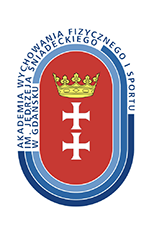Abstract
Introduction: Knee ligament ruptures are common injuries among athletes. While most previous studies examined single collagen gene polymorphisms, few have investigated haplotype-level associations across multiple genes, particularly in elite handball players. Materials and methods: This case-control study analyzed variants in eight collagen genes (COL1A1, COL1A2, COL3A1, COL5A1, COL11A1, COL15A1, COL22A1, and COL27A1) in 103 elite Polish handball players with non-contact knee ligament rupture and 226 matched controls. Results: The COL22A1 rs11784270 CC genotype was associated with an increased risk (OR = 2.88, p = 0.01), with the strongest effect in the dominant model (OR = 1.91, p = 0.01). COL1A2 rs42524 CC (OR = 3.52, p = 0.03) and rs2621215 GG (OR = 3.19, p = 0.048) were also risk-associated. The COL1A2 G–T haplotype was associated with a lower risk (p = 0.01 in additive and dominant models), while the C–G haplotype was associated with a higher risk (p = 0.03 additive, p = 0.02 recessive). The A–T haplotype of COL22A1 showed an as-sociation with a lower risk (p = 0.01 additive, p = 0.04 dominant, p = 0.03 recessive), whereas the C–T haplotype was associated with a higher risk (p = 0.01 additive, p = 0.02 dominant). Conclusions: COL1A2 and COL22A1 variants may provide insights relevant to future approaches to injury prevention.
Recommended Citation
Krawczak-Wojcik K, Mastalerz A, Bojarczuk A, Johne M, September AV, Garbacz A, Komar K, Maculewicz E. The evaluation of variants within eight collagen genes COL1A1, COL1A2, COL3A1, COL5A1, COL11A1, COL15A1, COL22A1, and COL27A1 and a risk of non-contact knee ligament rupture in elite handball players: A case-control study. Balt J Health Phys Act. 2025;17(3):Article7. DOI: 10.29359/BJHPA.17.3.07
Author ORCID Identifier
Katarzyna Krawczak-Wójcik ORCID 0000-0001-7557-8059
Andrzej Mastalerz ORCID 0000-0003-2031-5563
Aleksandra Bojarczuk ORCID 0000-0002-4398-3815
Monika Johne ORCID 0000-0002-7066-8909
Alison V. September ORCID 0000-0003-0950-286X
Aleksandra Garbacz ORCID 0000-0003-0050-7891
Katarzyna Komar ORCID 0009-0002-0636-2961
Ewelina Maculewicz ORCID 0000-0002-3122-3085
Creative Commons License

This work is licensed under a Creative Commons Attribution-Noncommercial-No Derivative Works 4.0 License.
Included in
Genetics Commons, Sports Medicine Commons, Sports Sciences Commons



